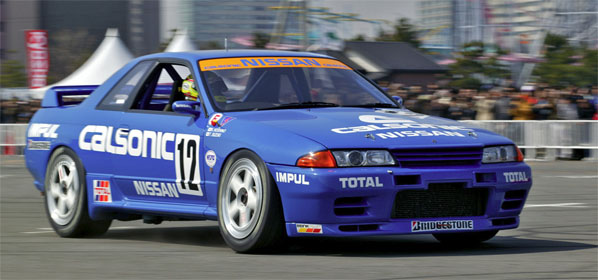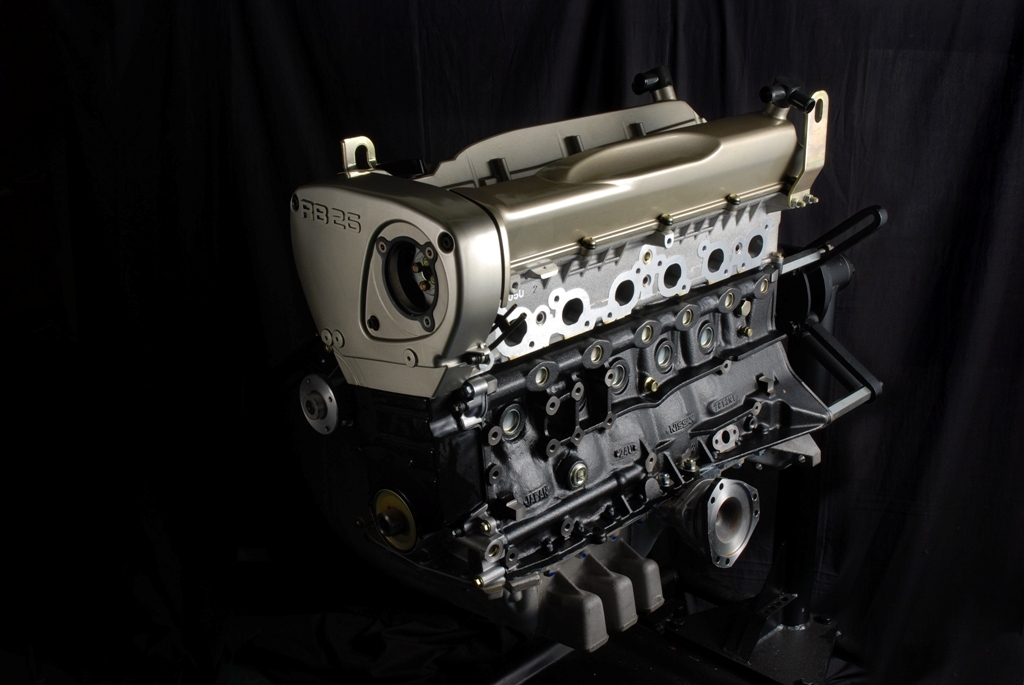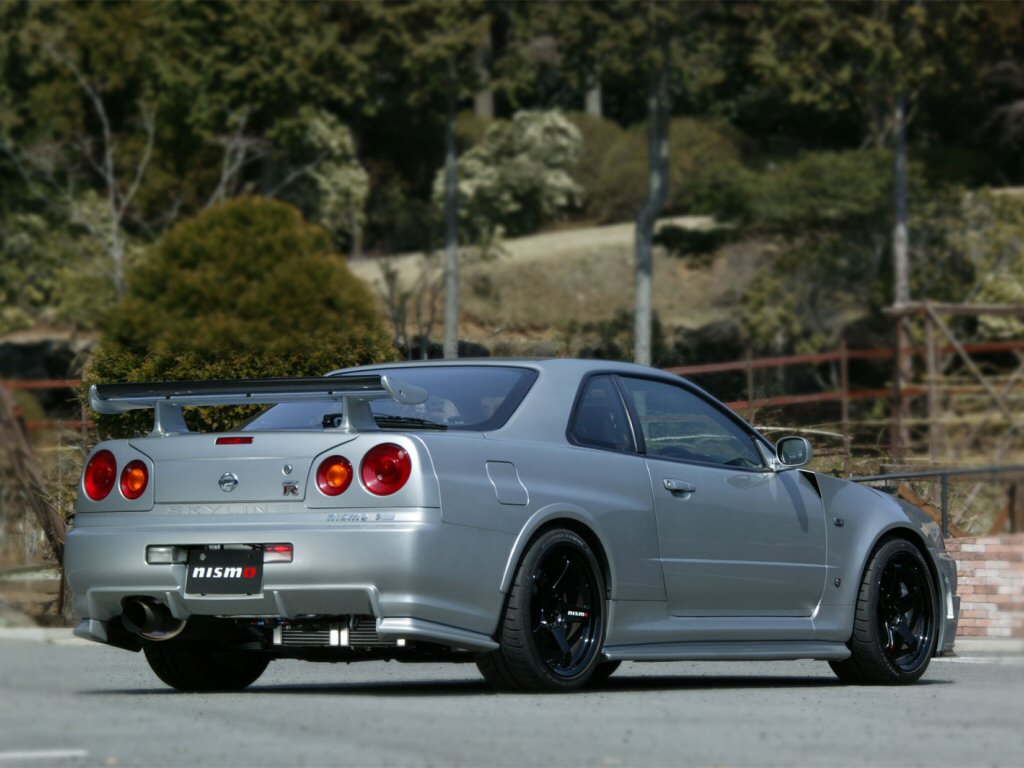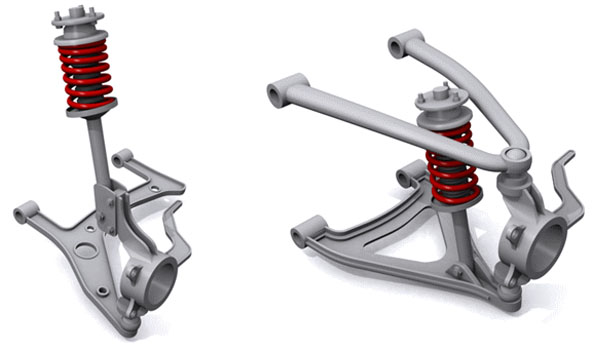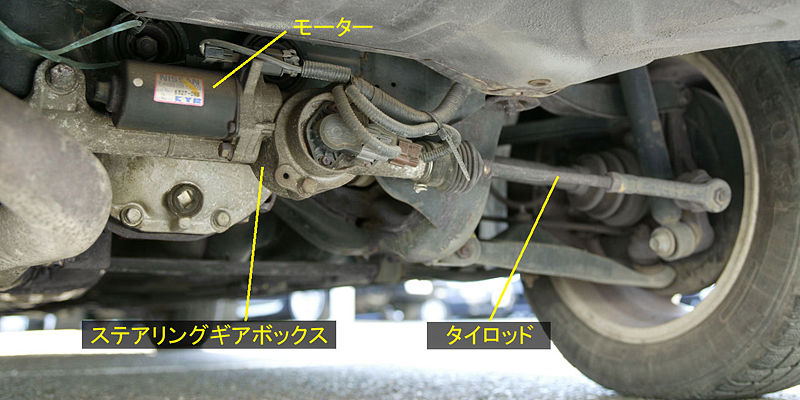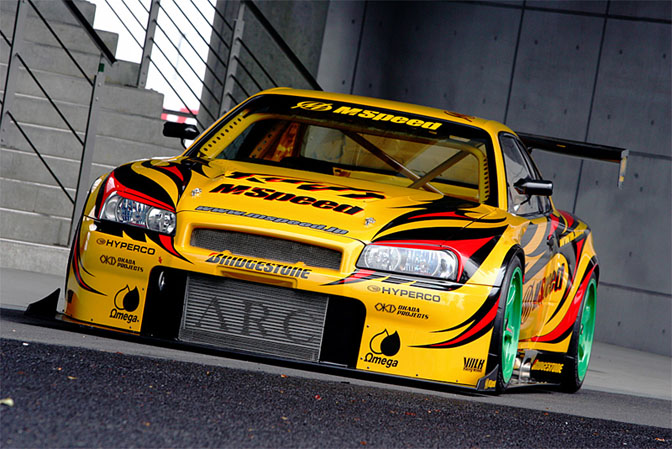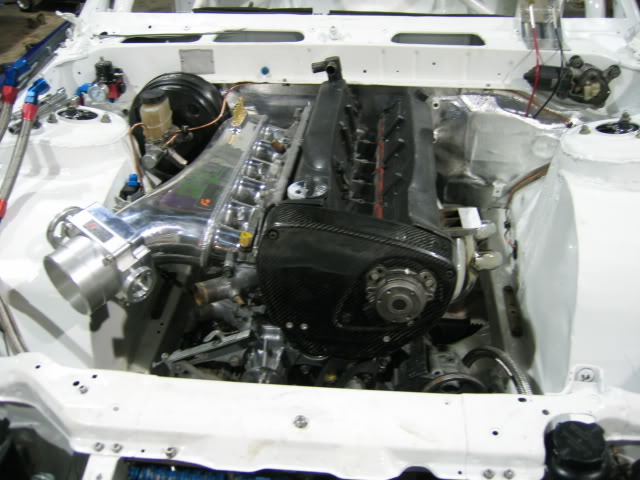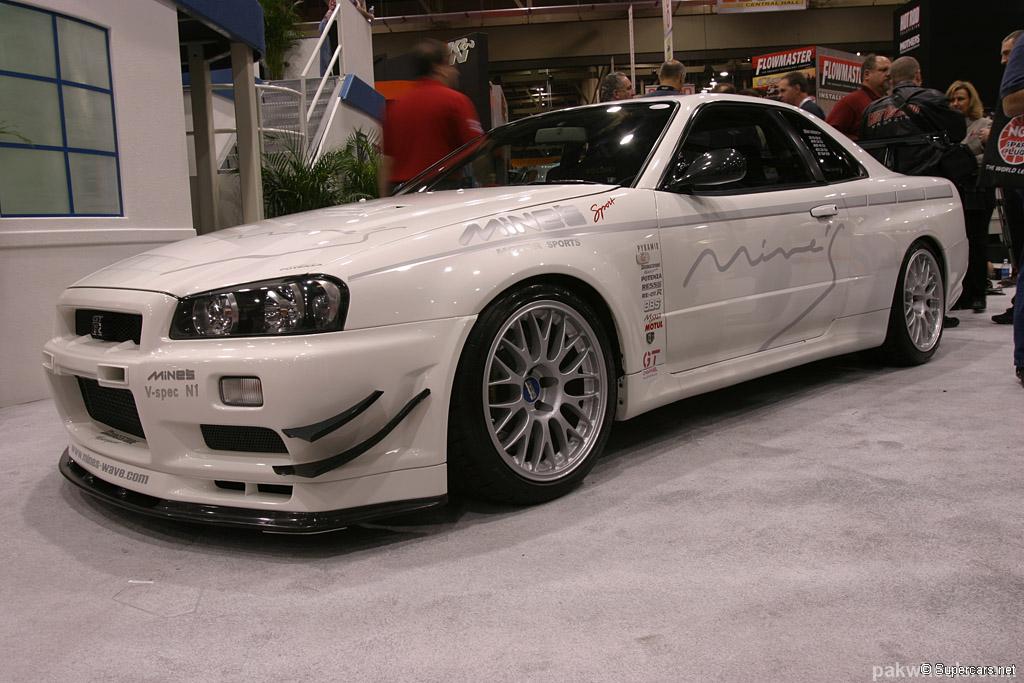The R-Platform (R32/33/34) is very famous for it’s RB engine and was Nissans flagship back in the days. The R32 was launched in 1989 and in the beginning a very good and fast sports car. Back in these days an average 911 Turbo had 320bhp and the R32GTR had 280bhp – fact is that the power of the GTR was just developed to that magic 280bhp number because of some sort of gentleman agreement. The reality is that most GTR’s in stock trim had more than 300bhp. This made the car a true competitor against a 911 Turbo. The RB26DETT engine was developed in relation to the 4WD platform to compete in Japanese Group A 4500cc-class racing, where it had big success. The first season Nismo won 29 out of 29 races with the new R32GTR platform.
In Europe the R32GTR had no big success, actually it was never produced in left hand driven editions! Another issue is, that the rules in European racing series were much more in favour of a highreving 4 cylinder engine like the old E30 DTM or 190E 2.3 DTM ones. But in many other disciplines the car dominated strongly – Drag, Time Attack, Endurance and Drift the car was omnipresent! Even thought the car was heavy with 1430kg dry weight, the modern 4WD system and powerplant made it a very strong competitor till today!
The heart of Godzilla – Nismo RB26DETT N1
The next generation was the R33 which wasn’t the biggest success. The car was just to heavy and the advantage in technology wasn’t really big over the R32. The next big competitor was the R34 which was produced till 2002. The car had several special editions and homage including the V-Spec, V-Spec II, N1, V-Spec II Nür, 3 NISMO Editions – ending the era R34 with 20 pieces of the R34 NISMO Z-TUNE. The last true Godzilla – stroked to 2.8l and over 500bhp this was the last evolution of the legend!
The rear lights are very typical for all Skylines!
Enough history lesson for today. In fact the Skyline has a very favourable front suspension and rear suspension for it’s age and development year! The rear-end is a classic multilink suspension as known from the Nissan Silvia. The front is a double-wishbone layout whereas the Silvia has the less developed MacPherson. The double wishbone can develop enormous grip without increasing camber to hilarious numbers and is not affected by body roll as much as !
MacPherson (left) vs double wishbone (right)
One of the biggest innovations in this time was Nissans ATTESA System. The system is responsible to distribute the torque to the front and rear wheels. The GTR has a light over steer character. As you drive the car harder and harder through corners, the ATTESA makes it handle more and more like a true RWD car. A true 50/50 system is known to have a tendency to under steer in corners. Paired to the HICAS Rearaxle system – which is responsible for variable toe-in toe-out geometry – the car is very agile and easy drivable on the limit and behaves not like a true AWD car. Nevertheless the straight-line traction is guaranteed.
We don’t understand these yellow words but I’m sure it means: Junk, Crap, Useless
The big disadvantage of the platform is, that the heavy I6 engine on the front axle. This messes up the advantages. The car is just to heavy for today’s extreme racing applications. To compare one of the fastest EVO’s with a Skyline the weight difference would be around 150 – 200kg! (HKS EVO: 1070kg wet!). It’s already heavy to crack the 1200kg barrier with a full cage in a S14, but for a Skyline the 1300kg mark is already a big one to crack!
The MSpeed R34 is probably the lightest R34 TimeAttack car – Dry: 1190kg
In the drift scene you can see the same thing. During the beginnings of the D1 the big angle action and smoke was a new trend. The RB was the engine to chose on the Nissan platform (JZ on Toyota). The RB was successfully swapped in different chassis including the lightweight S13. The engine is known to deliver good and solid power results. But this trend is over. Today, speed and dynamics became so much more important in D1 and other drift series, so the RB is just to heavy in an S-Chassis and destroys the weight ratio! Yes, the setup is proven, but the setup is not fast during drift nor for grip driving!
The famous Rocketbunny S13 RB30 did swap back to an SR20 engine – for handling!
On the other hand a yet unproven thing is the R32 with an SR20DET swap. Yes call me a idiot – but the big advantage in suspension on the Skyline platform over the Silvia platform mated to the best supported aftermarket engine would surely make a good combo. Today the SR can be made to withstand big abuse and is proven to deliver 200bhp/l in stock form! The swap would bring at least 100 – 120kg advantage over the RB engine! And you just need to sort out the other fancy bits in the car, like removing the Hicas system. (80kg!)
The Mines R34 – the best R34 ever?
To conclude – The Nissan Skyline is a legend. During the last decades the car was a winner in many type of competition. Today there are better and easier ways for amateurs and enthusiast to build a good track / clubsport car. And for the serious purpose the advantages are just not big enough to win over the little outdated technology! As a nice young timer a R32 GTR is still a dream and now with the low currency – make it happen call Tobi and get one today!
The R-Platform (R32/33/34) is very famous for it’s RB engine and was Nissans flagship back in the days. The R32 was launched in 1989 and in the beginning a very good and fast sports car. Back in these days an average 911 Turbo had 320bhp and the R32GTR had 280bhp – fact is that the power of the GTR was just developed to that magic 280bhp number because of some sort of gentleman agreement. The reality is that most GTR’s in stock trim had more than 300bhp. This made the car a true competitor against a 911 Turbo. The RB26DETT engine was developed in relation to the 4WD platform to compete in Japanese Group A 4500cc-class racing, where it had big success. The first season Nismo won 29 out of 29 races with the new R32GTR platform.
In Europe the R32GTR had no big success, actually it was never produced in left hand driven editions! Another issue is, that the rules in European racing series were much more in favour of a highreving 4 cylinder engine like the old E30 DTM or 190E 2.3 DTM ones. But in many other disciplines the car dominated strongly – Drag, Time Attack, Endurance and Drift the car was omnipresent! Even thought the car was heavy with 1430kg dry weight, the modern 4WD system and powerplant made it a very strong competitor till today!
The heart of Godzilla – Nismo RB26DETT N1
The next generation was the R33 which wasn’t the biggest success. The car was just to heavy and the advantage in technology wasn’t really big over the R32. The next big competitor was the R34 which was produced till 2002. The car had several special editions and homage including the V-Spec, V-Spec II, N1, V-Spec II Nür, 3 NISMO Editions – ending the era R34 with 20 pieces of the R34 NISMO Z-TUNE. The last true Godzilla – stroked to 2.8l and over 500bhp this was the last evolution of the legend!
The rear lights are very typical for all Skylines!
Enough history lesson for today. In fact the Skyline has a very favourable front suspension and rear suspension for it’s age and development year! The rear-end is a classic multilink suspension as known from the Nissan Silvia. The front is a double-wishbone layout whereas the Silvia has the less developed MacPherson. The double wishbone can develop enormous grip without increasing camber to hilarious numbers and is not affected by body roll as much as !
MacPherson (left) vs double wishbone (right)
One of the biggest innovations in this time was Nissans ATTESA System. The system is responsible to distribute the torque to the front and rear wheels. The GTR has a light over steer character. As you drive the car harder and harder through corners, the ATTESA makes it handle more and more like a true RWD car. A true 50/50 system is known to have a tendency to under steer in corners. Paired to the HICAS Rearaxle system – which is responsible for variable toe-in toe-out geometry – the car is very agile and easy drivable on the limit and behaves not like a true AWD car. Nevertheless the straight-line traction is guaranteed.
We don’t understand these yellow words but I’m sure it means: Junk, Crap, Useless
The big disadvantage of the platform is, that the heavy I6 engine on the front axle. This messes up the advantages. The car is just to heavy for today’s extreme racing applications. To compare one of the fastest EVO’s with a Skyline the weight difference would be around 150 – 200kg! (HKS EVO: 1070kg wet!). It’s already heavy to crack the 1200kg barrier with a full cage in a S14, but for a Skyline the 1300kg mark is already a big one to crack!
The MSpeed R34 is probably the lightest R34 TimeAttack car – Dry: 1190kg
In the drift scene you can see the same thing. During the beginnings of the D1 the big angle action and smoke was a new trend. The RB was the engine to chose on the Nissan platform (JZ on Toyota). The RB was successfully swapped in different chassis including the lightweight S13. The engine is known to deliver good and solid power results. But this trend is over. Today, speed and dynamics became so much more important in D1 and other drift series, so the RB is just to heavy in an S-Chassis and destroys the weight ratio! Yes, the setup is proven, but the setup is not fast during drift nor for grip driving!
The famous Rocketbunny S13 RB30 did swap back to an SR20 engine – for handling!
On the other hand a yet unproven thing is the R32 with an SR20DET swap. Yes call me a idiot – but the big advantage in suspension on the Skyline platform over the Silvia platform mated to the best supported aftermarket engine would surely make a good combo. Today the SR can be made to withstand big abuse and is proven to deliver 200bhp/l in stock form! The swap would bring at least 100 – 120kg advantage over the RB engine! And you just need to sort out the other fancy bits in the car, like removing the Hicas system. (80kg!)
The Mines R34 – the best R34 ever?
To conclude – The Nissan Skyline is a legend. During the last decades the car was a winner in many type of competition. Today there are better and easier ways for amateurs and enthusiast to build a good track / clubsport car. And for the serious purpose the advantages are just not big enough to win over the little outdated technology! As a nice young timer a R32 GTR is still a dream and now with the low currency – make it happen call Tobi and get one today!
